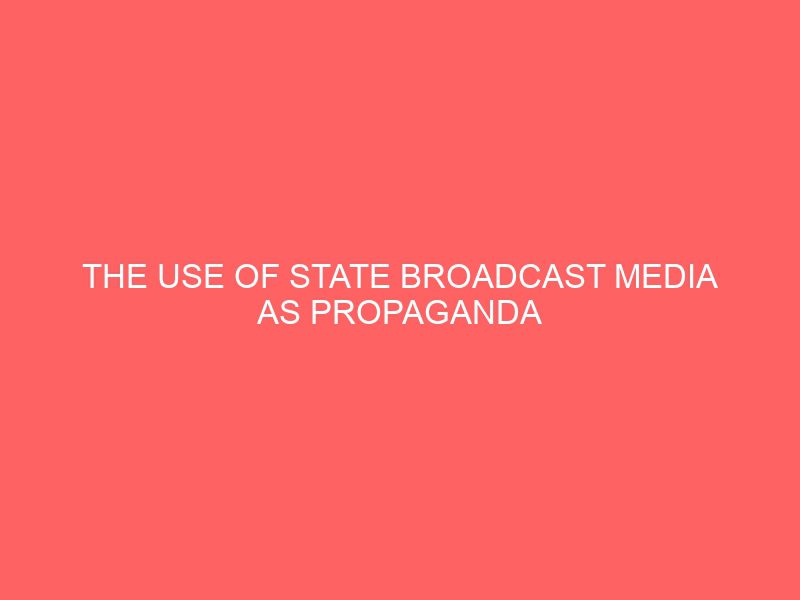Description
ABSTRACT
In several quarters, there have been allegation making round, that state governments use their state Broadcast media as propaganda machinery. The focus is to investigate such allegation using Enugu State Broadcasting Service ESBS radio/TV as a case study. The study was based on critical theory by staurt Hall. The theory views the means by which the haves of society gain the willing support of the have not to maintain the status quo. The study uses empirical method observing the five chapters structural arrangement, with each chapter assigned a specific role to play for the overall success of producing a reliable result. The researcher consulted relevant literature to raise secondary data while survey method was used to generate primary data for analysis. The data generated using questionnaire techniques were tested using chi-square goodness of fit test formular. Data were presented in tables and extensively discussed to enable the researcher draw his conclusion and make some recommendations. The researcher though did not find Enugu state government using its broadcast outfits as propaganda machinery, but strongly recommends that the management of the broadcast stations should overhaul its programmes in order to drop those perceived by the media audiences as sycophantic, wherein presenters use them to sing praises for the state government unnecessarily.
Title page i
Approval page ii
Dedication iii
Acknowledgements iv
Table of contents vii
Abstract x
CHAPTER ONE: INTRODUCTION
1.1 Background of the study 1
1.2 Statement of the study 4
1.3 Objectives of the study 6
1.4 Significance of the study 8
1.5 Research questions 9
1.6 Research hypotheses 10
1.7 Definitions of terms 11
1.8 Assumptions of the study 13
1.9 Limitation of the study 14
References 16
CHAPTER TWO: LITERATURE REVIEW
2.1 Sources of literature18
2.2 Review of the literature 18
2.3 Theoretical framework 31
2.4 Summary of the literature reviewed 32
References 34
CHAPTER THREE: RESEARCH METHODOLOGY
3.1 The research design 37
3.2 Area of the study 37
3.3 Population of the study 38
3.4 Research sample and sampling techniques 38
3.5 Instrument used for data collection 40
3.6 Data collection 41
3.7 Data analysis 41
References 42
CHAPTER FOUR: PRESENTATION AND ANALYSIS OF DATA
4.1 Data presentation and analysis 43
4.2 Hypothesis testing 50
4.3 Discussion of findings 54
References 59
CHAPTER FIVE: SUMMARY, CONCLUSION AND RECOMMENDATIONS ON FURTHER STUDIES.
5.1 Summary 60
5.2 Conclusion 61
5.3 Recommendations on further studies 62
Bibliography 64
Appendix 68
Questionnaire. 69








Reviews
There are no reviews yet.